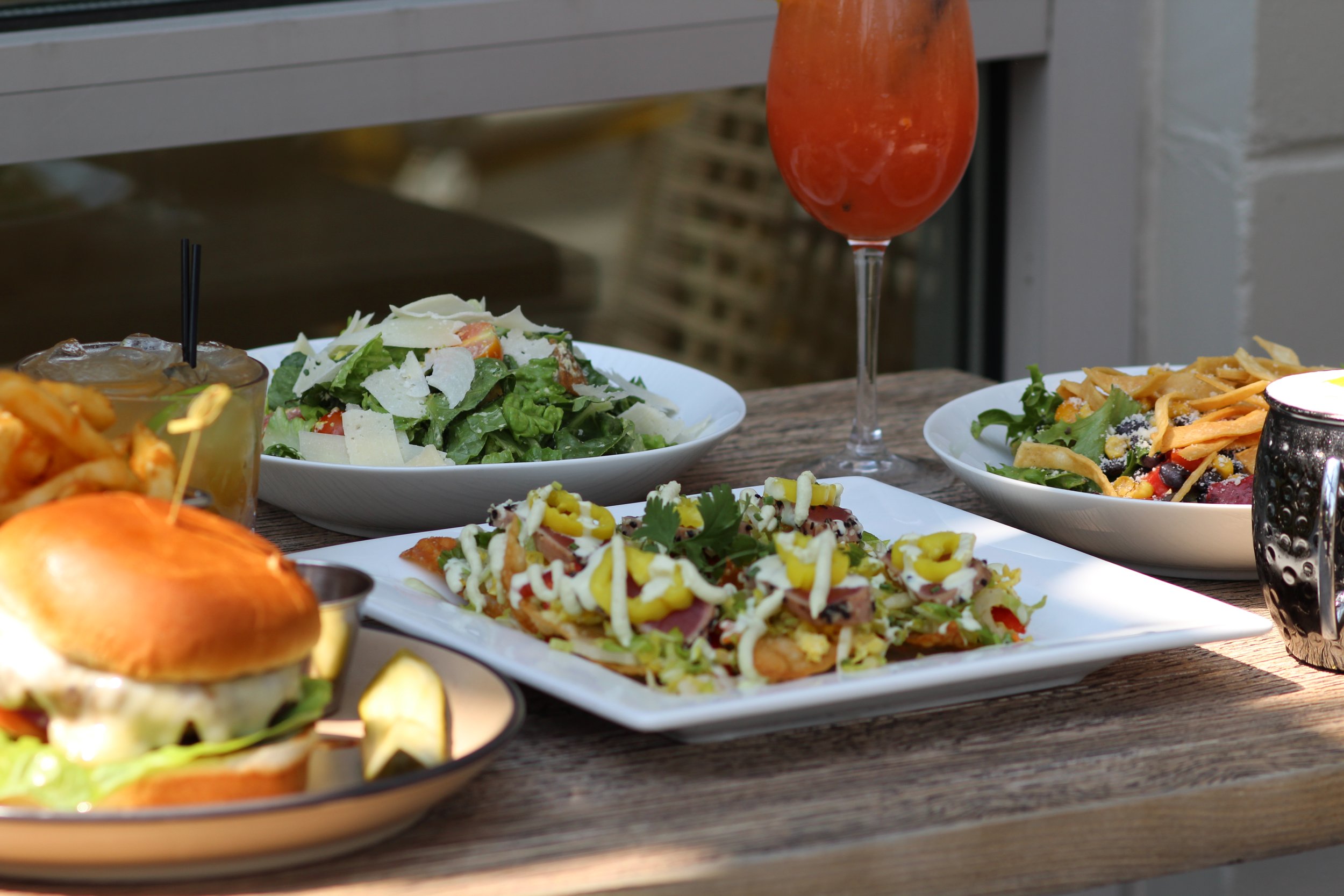Savor Genuine Eastern Food With a Pan-Asian Spin for a Culinary Experience
Getting started on a cooking trip through authentic Oriental cuisine, improved with a Pan-Asian twist, uses a distinct possibility to discover the rich tapestry of tastes that define the region's diverse cooking customs. This experience welcomes you to relish the elegant balance of tastes-- wonderful, salty, spicy, and sour-- balanced by fragrant natural herbs and flavors. Picture the innovative fusion of Thai curry and ramen or the unforeseen pleasure of sushi burritos. As you ponder these attracting meals, take into consideration the cultural narratives and historical influences that form them, each bite supplying a tale waiting to be discovered.

Exploring Pan-Asian Flavors
In the world of worldwide gastronomy, Pan-Asian cuisine stands apart for its amazing variety and the harmonious interplay of flavors from numerous Eastern societies. This cooking approach celebrates the rich customs and one-of-a-kind ingredients found throughout the continent, developing a tapestry of tastes that is both rewarding and interesting. Key to Pan-Asian food is its capability to balance different flavors-- wonderful, salted, spicy, and sour-- while highlighting the freshness and high quality of each ingredient.
From the umami-rich soy sauce of Japan to the intense chili peppers of Thailand, Pan-Asian food uses an extensive combination of tastes. These components are typically combined in creative ways, improving dishes with layers of intricacy. As an example, making use of great smelling herbs such as lemongrass and cilantro, typical in Vietnamese and Thai food, adds a revitalizing brightness to dishes, while the unification of coconut milk provides a velvety, abundant structure.
The focus on fresh produce and aromatic spices guarantees that each meal is not only a feast for the taste however also for the detects. Pan-Asian cuisine invites diners to get started on a culinary trip, checking out the vast and varied landscapes of Eastern gastronomy with every bite.
Combination Recipes to Attempt
While Pan-Asian cuisine is commemorated for its typical tastes, the modern cooking landscape is increasingly welcoming combination dishes that blend these traditional elements with influences from various other areas. This innovative approach not only honors the rich heritage of Asian cookeries but also introduces unique taste experiences that appeal to modern tastes buds.
A prime example of such a blend dish is the Korean-Mexican taco, where marinated bulgogi beef is wrapped in a warm tortilla, topped with kimchi and a zesty gochujang-infused salsa. This mix weds the vibrant, savory flavors of Korea with the vivid, fresh components of Mexican cuisine. Similarly, sushi burritos have obtained popularity, amalgamating the fragile creativity of Japanese sushi with the passionate, hand-held comfort of a burrito, often featuring combination components like tempura shrimp and avocado with a drizzle of wasabi mayo.
An additional notable recipe is Thai curry ramen, which infuses the creamy, fragrant spices of Thai curry into the calming broth of conventional Japanese ramen, developing a harmonious blend that entices the senses. These fusion recipes extend past mere uniqueness; they stand for a cooking dialogue in between societies, motivating expedition and innovation worldwide of Pan-Asian food.
Vital Components and Spices
To genuinely value Pan-Asian food, one have to comprehend the essential components and spices that create its structure. This diverse culinary style attracts from a rich tapestry of Eastern customs, using a harmonious mix of tastes and appearances. Secret components consist of soy sauce, fish sauce, and oyster sauce, which impart a mouthwatering umami deepness important to Oriental recipes. Corresponding to these are rice vinegar and mirin, providing a fragile level of acidity and sweet taste.
Fragrant components are pivotal, with ginger, garlic, and lemongrass being common across numerous Pan-Asian recipes. These active ingredients provide a fragrant base that enhances the intricacy of tastes. Flavors such as celebrity anise, cardamom, and cinnamon introduce warmth and personality, echoing impacts from areas like China and India.

Cooking Strategies and Tips
Grasping the art of Pan-Asian food requires familiarity with its unique food preparation techniques, each adding to the dynamic tapestry of flavors this cooking tradition is commemorated for. Central to these techniques is the stir-fry, a rapid cooking strategy that preserves the nutritional integrity and dazzling shades of active ingredients. Utilizing a wok, the stir-fry technique permits for even heat circulation, important for achieving the particular structure and taste equilibrium of Pan-Asian meals.
Another fundamental strategy is steaming, specifically common in Chinese food. This gentle approach preserves the all-natural flavors and nutrients of active ingredients, making it suitable for seafood and veggies. Dumplings, a beloved staple, commonly take advantage of steaming, leading to soft, succulent textures.
Barbecuing, likewise important, passes on great smoky midsts to meals such as Oriental bulgogi or Japanese yakitori (asian fusion restaurant). This strategy frequently includes seasoning active ingredients, allowing tastes to penetrate deeply before cooking over an open fire or warmer
Last but not least, grasping the art of balancing flavors-- pleasant, sour, salted, bitter, and umami-- is crucial. Properly layering these components can raise a recipe from average to amazing, using a facility and pleasing cooking experience that symbolizes the significance of Pan-Asian food.
Dining Experiences Worldwide
Around the world, Pan-Asian food provides an unrivaled dining experience, commemorated for its rich tapestry of flavors and vibrant presentations. This cooking sensation has transcended cultural limits, recording the hearts and palates of food enthusiasts worldwide. In worldwide cities like New York, London, and american food near me Sydney, Pan-Asian dining establishments act as fusions where culinary traditions from Thailand, Japan, China, and beyond merge, supplying restaurants with an eclectic mix of dishes that highlight the region's more helpful hints variety.
The global charm of Pan-Asian food exists in its capacity to supply both authenticity and innovation. Cooks masterfully wed traditional active ingredients such as lemongrass, soy sauce, and miso with contemporary methods, leading to dishes that are both familiar and refreshingly new. This blend allows diners to begin on a culinary journey that respects heritage while accepting modernity.
Furthermore, dining experiences are elevated via attentively designed environments that show the values of Pan-Asian appearances. From minimal Japanese-inspired interiors to vivid Thai-themed spaces, each restaurant supplies an one-of-a-kind ambiance that complements the culinary offerings. As an outcome, clients are not just taking in a meal yet partaking in a social experience, making Pan-Asian eating a truly worldwide phenomenon.
Conclusion
The exploration of Pan-Asian food offers an extensive understanding of the detailed interplay of flavors and culinary traditions throughout Asia. By embracing combination meals such as Thai curry ramen and sushi burritos, the cooking trip not only highlights the flexibility of conventional components but also showcases ingenious modern-day techniques. This gastronomic adventure, enhanced by necessary flavors and cooking methods, offers an one-of-a-kind chance to value the cultural variety and cooking creativity that specify Pan-Asian food on a global scale.
Embarking on a culinary trip via genuine Eastern cuisine, boosted with a Pan-Asian twist, supplies an one-of-a-kind possibility to discover the rich tapestry of flavors that specify the area's diverse culinary customs.In the realm of worldwide gastronomy, Pan-Asian cuisine stands out for its exceptional variety and the harmonious interaction of flavors from different Asian cultures. Secret to Pan-Asian cuisine is its ability to balance different tastes-- sweet, salty, spicy, and sour-- while highlighting the freshness and high quality of each ingredient.
